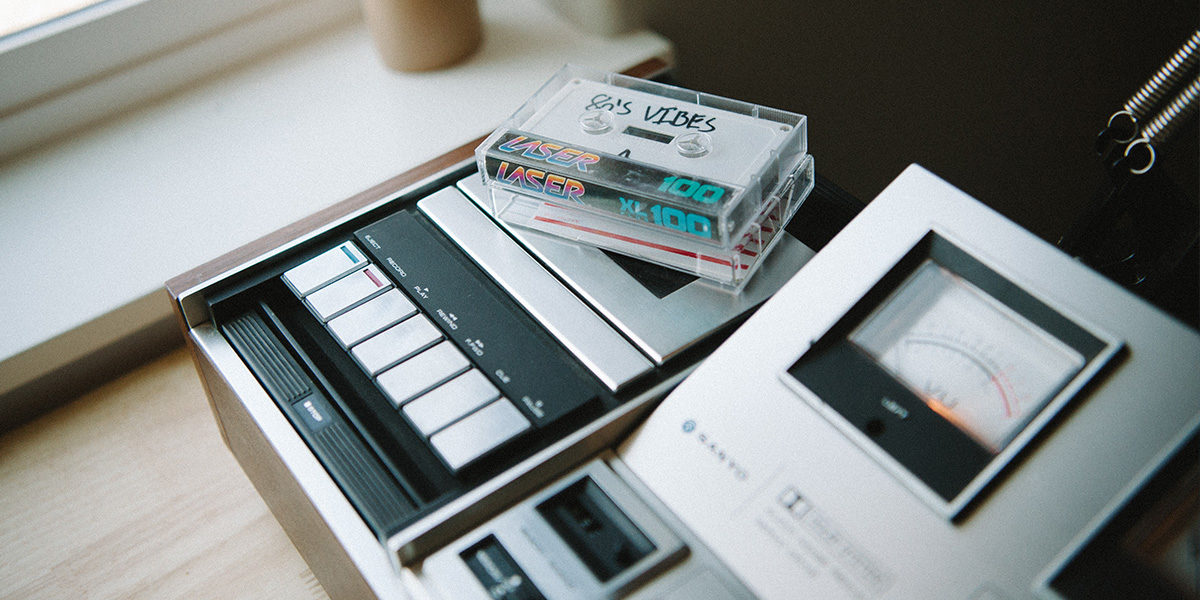
Jeremy Leaird-Koch is thrilled to announce the release of his new album, but it’s not one that you can stream on Spotify, enjoy on Bandcamp or buy as a CD. The only place you can enjoy it is on YouTube, as part of the website’s music library, which is a collection of royalty-free tracks that anyone can use on their videos. Here Jeremy explains how he put together an incredible ten tracks in just over four weeks.
Jeremy Leaird-Koch is a musician from Seattle who not only has a keen interest in the gear behind music production, but also in making videos. When he decided to combine his interests and produce videos about studio gear, it turned out to be a life-changing decision, as it has led to him making music professionally for none other than YouTube itself, [something Andrew Huang also does, you can check out his interview here.] The huge video hosting website now has its own music library for which it commissions composers to produce music, which can then be used by other video makers to soundtrack their work. Jeremy’s music came to the website’s attention due to the popularity of his music gear videos, as he explains.
My Teenage Engineering OP-1 videos started garnering a lot of attention, and then YouTube’s algorithm started suggesting my videos on the front page. That combined into an organic growth that came from all over the place. YouTube then reached out to me and asked me to contribute ten tracks for its library. I’ve used tracks from the library in my own videos and it’s a really great resource, so now ten of my tracks are in it for you to use!”
“YouTube gave me a little over a month, so that’s not a lot of time,” he continues. “The creative control was left in my court, which was lovely, but when faced with a project with no real structure to it outside of ‘do whatever you want’, it can be hard to focus, so I had to constrain myself to figure out how to get the initial ideas down.”
Jeremy decided that the best approach would be to use one of the Expansions series – including ASTRAL FLUTTER, HALCYON SKY, SOLAR BREEZE, METEORIC RISE, TIMELESS GLOW, and HELIOS RAY – for each of the ten tracks, using presets from each and a template created in Ableton Live.
“I chose these expansions based on the descriptions on the NI website and the demos,” Jeremy explains, “plus they all represent genres I love. The number one thing they provided was a framework from which to start. Grabbing well-constructed inspiration from a single Expansion allowed me to focus on getting ideas down quickly, without worrying too much about whether I was ‘doing it right’.”
“I started my sketching in Ableton Live with Push 2,” he says of the compositional process. “I also used an Expressive E Touché, a pedal which is really good for expressive playing. In the Ableton template I put instances of BATTERY onto the first two tracks and MASSIVE onto another track. I assigned the eight controllers in MASSIVE to those on Push and saved that as a template to open up whenever I started a new sketch.”

“One of the things that got me excited about this project,” Jeremy continues, “was that I wasn’t allowed to use full vocals, only snippets. I found Output’s Exhale, a KONTAKT instrument, which is just all kinds of vocals – pads, snippets, one-shots, sliced phrases – so it is on almost every track.”
Halfway through the assignment, Jeremy added a KOMPLETE KONTROL S49 to his studio, which revolutionised the process.
“That was a game-changer,” he states. “In the way that Push enhances my Ableton workflow, so KOMPLETE KONTROL completely enhances my plug-in workflow. I was expecting the S49 to be a sturdy controller with integration into the library aspects of the NI ecosystem. What I was not prepared for, was the depth of integration with not only NI but also the entire NKS family. Being able to search for virtually any sound with a variety of metadata options removed the tedium of having to load a specific plug-in and hope the thing I wanted was going to be included.”
“On top of that, it was giving me results for plug-ins in the AAS and Arturia family, which opened up all those instruments in a new way. And on top of that – and this is something I didn’t expect at all – it was giving me auto-mapped controls to a ton of parameters for every instrument it loaded. It turns my software ecosystem into, essentially, a hardware workstation. I love it to death. It makes me want to make music in-the-box again, which is saying quite a lot.”

Jeremy completed each of the ten tracks in time by fleshing them out in the Arranger Mode in Ableton and then mastering each with various iZotope plug-ins. So what did he learn from the whole process?
“That ‘workflow’ was most important,” he replies. “Getting down into it, getting sketches fired off as quickly as possible, listening to your gut, to your ears, feeling what you are doing and not second guessing yourself. Those are all really important things and I feel really fortunate that I found tools to help me to do them.”
So how does Jeremy rate the experience?
“I think the project went great,” he says. “I did think there would be more genre-separation between the tracks, but in the end I fell into a groove and used the sounds in the Expansions to fit my needs. I just explored them and did what felt right. I’m really happy with the tracks and I hope they sit well in people’s videos. I am also slated to do another batch in the fall. This time around I would like to focus on more atmospheric, experimental and soundtrack vibes.”
And after that, Jeremy is going to focus on his own music rather than producing for other people.
“I hope to sit down and make some for myself,” he says. “Between my hardware and software, I have enough tools to make new sounds for the rest of my entire life, and I intend to try!”

You can check out Jeremy’s YouTube library here.
photos by Brit Hansen.
MASSIVE was designed and developed entirely by Native Instruments GmbH. Solely the name Massive is a registered trademark of Massive Audio Inc, USA.

















